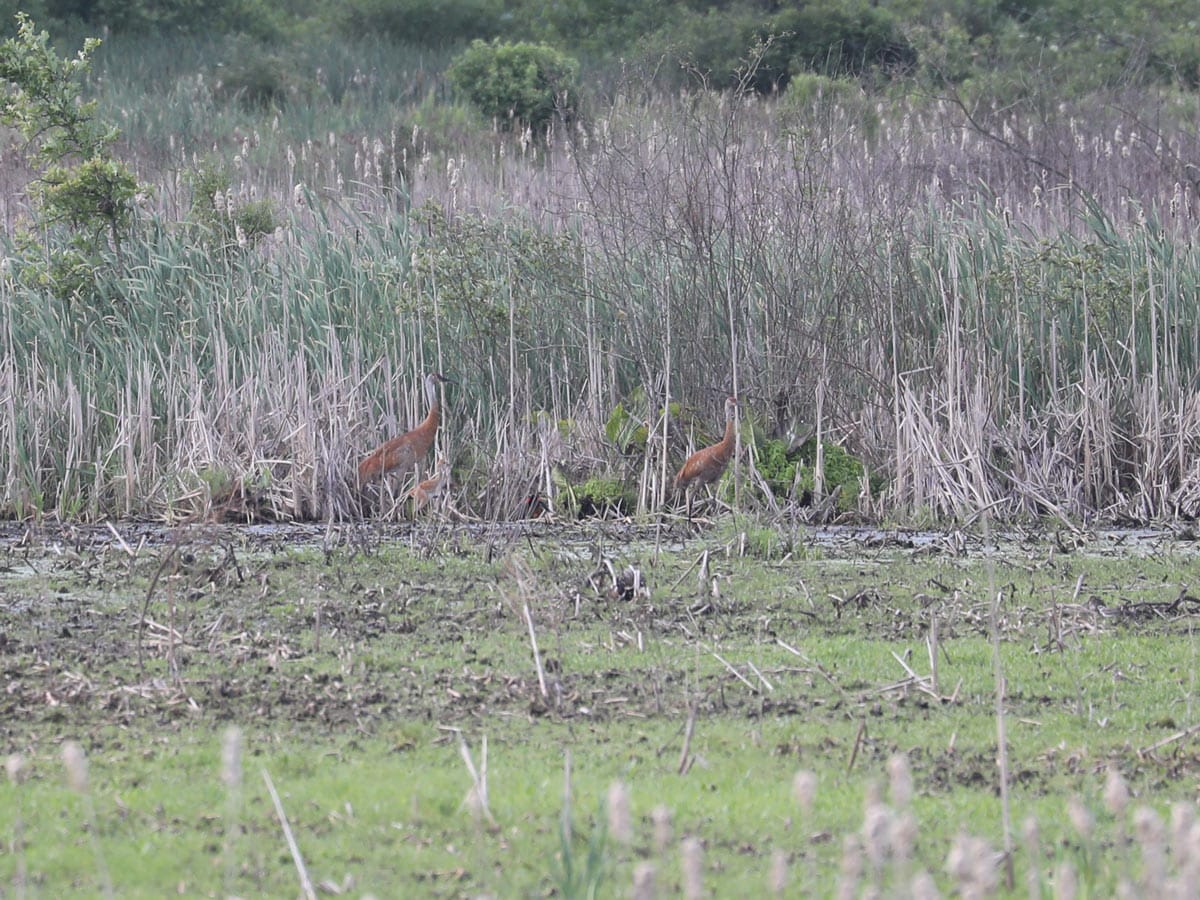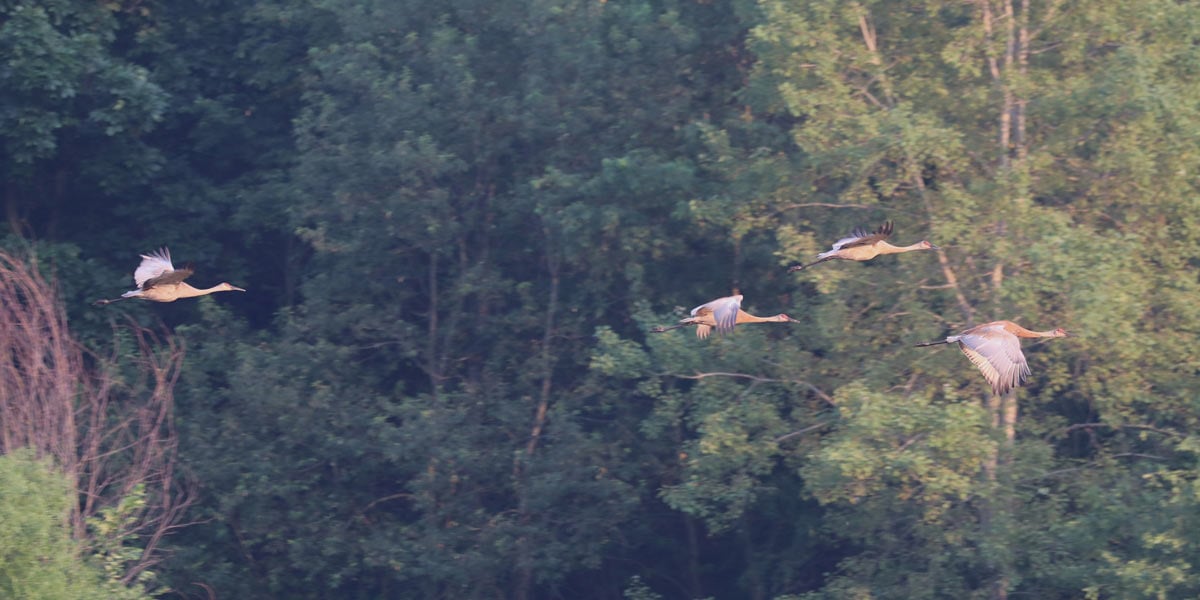Big Baby: Sandhill Crane
Several weeks ago I found a Sandhill Crane sitting on the ground on the far edge of a wetland. It was sitting in the same place two weeks in a row, so I suspected it was on a nest. The crane on the nest could have been a male or female, because both parents take time incubating eggs. I paid extra close attention on my next visit, because I had never seen a recently hatched crane in person.
The photo above shows both parents with a two-week-old juvenile. You can recognize the male crane on the left because males are large than females. I only ever saw the one young crane. It’s likely that this baby crane has no siblings, because crane parents usually separate the young when two hatch from the same nest. The female usually leaves the nest with the first crane to hatch, while the male cares for the second hatchling. It’s not fully understood why the parents separate the juvenile cranes, but it may be to prevent aggression between the siblings, or to decrease the chance that both juveniles are lost in one predator attack.
Unlike songbirds that need to stay in the nest to grow for several weeks after hatching, Sandhill Crane juveniles leave the nest the same day they hatch, sometimes within a few hours. They can’t fly, but they hatch with a full coat of downy feathers and the ability to start walking around and learning how to find food. Cranes grow fast – the juvenile crane in the photograph will look like an adult and reach its full height of 3.3 to 3.9 feet by the coming winter.
Big Baby: Sandhill Crane
Several weeks ago I found a Sandhill Crane sitting on the ground on the far edge of a wetland. It was sitting in the same place two weeks in a row, so I suspected it was on a nest. The crane on the nest could have been a male or female, because both parents take time incubating eggs. I paid extra close attention on my next visit, because I had never seen a recently hatched crane in person.
The photo above shows both parents with a two-week-old juvenile. You can recognize the male crane on the left because males are large than females. I only ever saw the one young crane. It’s likely that this baby crane has no siblings, because crane parents usually separate the young when two hatch from the same nest. The female usually leaves the nest with the first crane to hatch, while the male cares for the second hatchling. It’s not fully understood why the parents separate the juvenile cranes, but it may be to prevent aggression between the siblings, or to decrease the chance that both juveniles are lost in one predator attack.
Unlike songbirds that need to stay in the nest to grow for several weeks after hatching, Sandhill Crane juveniles leave the nest the same day they hatch, sometimes within a few hours. They can’t fly, but they hatch with a full coat of downy feathers and the ability to start walking around and learning how to find food. Cranes grow fast – the juvenile crane in the photograph will look like an adult and reach its full height of 3.3 to 3.9 feet by the coming winter.
About The Author
Dan Hinnebusch is the Ornithologist for Wild Birds Unlimited. Click to learn more.





